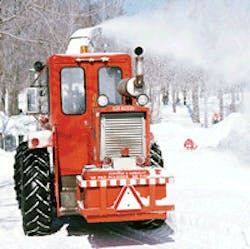OSHA Offers Advice for Protecting Workers During Winter Storms
The Winter Storms Web page provides guidance on how employers and workers involved in cleanup and recovery operations can recognize snow storm-related hazards and the necessary steps that employers must take to keep workers safe while working in these conditions. The page includes guidance for workers clearing heavy snow in front of workplaces and from rooftops, workers encountering downed power lines or traveling on icy roads and utility workers restoring power after winter storms. Hazards associated with working in winter storms include:
- Being struck by falling objects such as icicles, tree limbs and utility poles – Use caution around surfaces weighed down by large amounts snow or of ice.
- Driving accidents due to slippery roadways – Stay in the vehicle and do not leave the vehicle unless help is visible within 100 yards.
- Carbon monoxide poisoning.
- Dehydration, hypothermia and frostbite.
- Exhaustion from strenuous activity.
- Back injuries or heart attack while removing snow – Scooping small amounts of snow and using proper lifting form to avoid over-exertion or injuries.
- Slips and falls due to slippery walkways – Clear walking surfaces of snow and ice and use salt or its equivalent where appropriate.
- Electrocution from downed power lines and downed objects in contact with power lines – Assume all power lines are energized and stay well clear of any downed or damaged power lines.
- Burns from fires caused by energized line contact or equipment failure.
- Falls from snow removal on roofs or while working in aerial lifts or on ladders – Employers should provide and ensure the use of fall protection and provide and maintain ladders.
- Roof collapse under weight of snow (or melting snow if drains are clogged).
- Lacerations or amputations from unguarded or improperly operated chain saws and power tools, and improperly attempting to clear jams in snow blowers. Make certain all powered equipment is properly guarded and disconnected from power sources before cleaning or performing maintenance.
In addition, workers who must be out in hazardous winter conditions should wear reflective clothing and eye, face and body protection. Work zones should be established and clearly marked so that drivers or other workers can see them regardless of weather conditions. Employers should use engineering controls, personal protective equipment and safe work practices to reduce the length and severity of exposure to the cold for employees.
The new Winter Storms Web page at includes links to guidance from OSHA, the Federal Emergency Management Agency, the American Red Cross, the National Weather Service, the National Oceanic and Atmospheric Administration, the Centers for Disease Control and Prevention, the National Safety Council and other agencies and organizations.
About the Author

Sandy Smith
Sandy Smith is the former content director of EHS Today, and is currently the EHSQ content & community lead at Intelex Technologies Inc. She has written about occupational safety and health and environmental issues since 1990.
